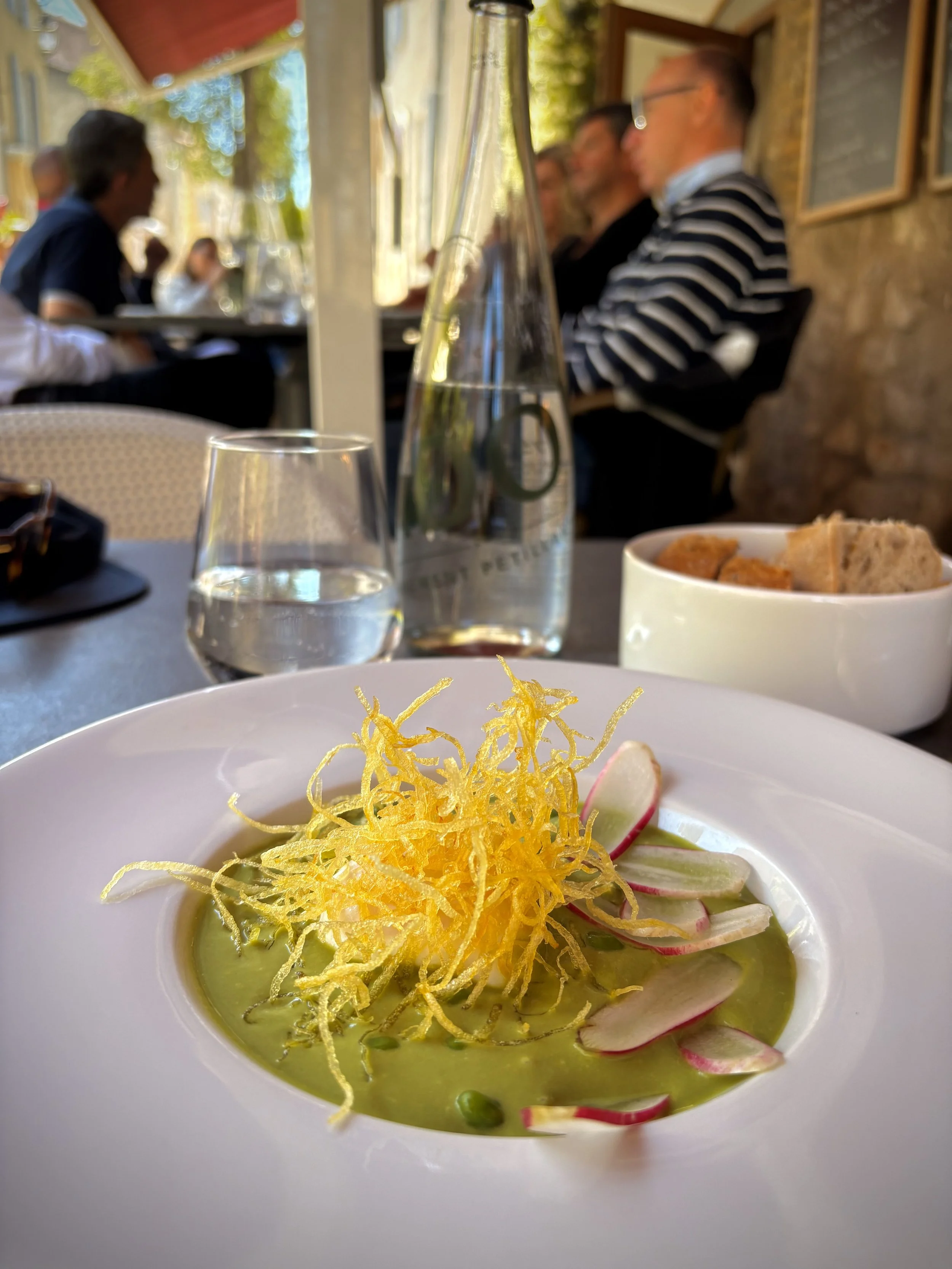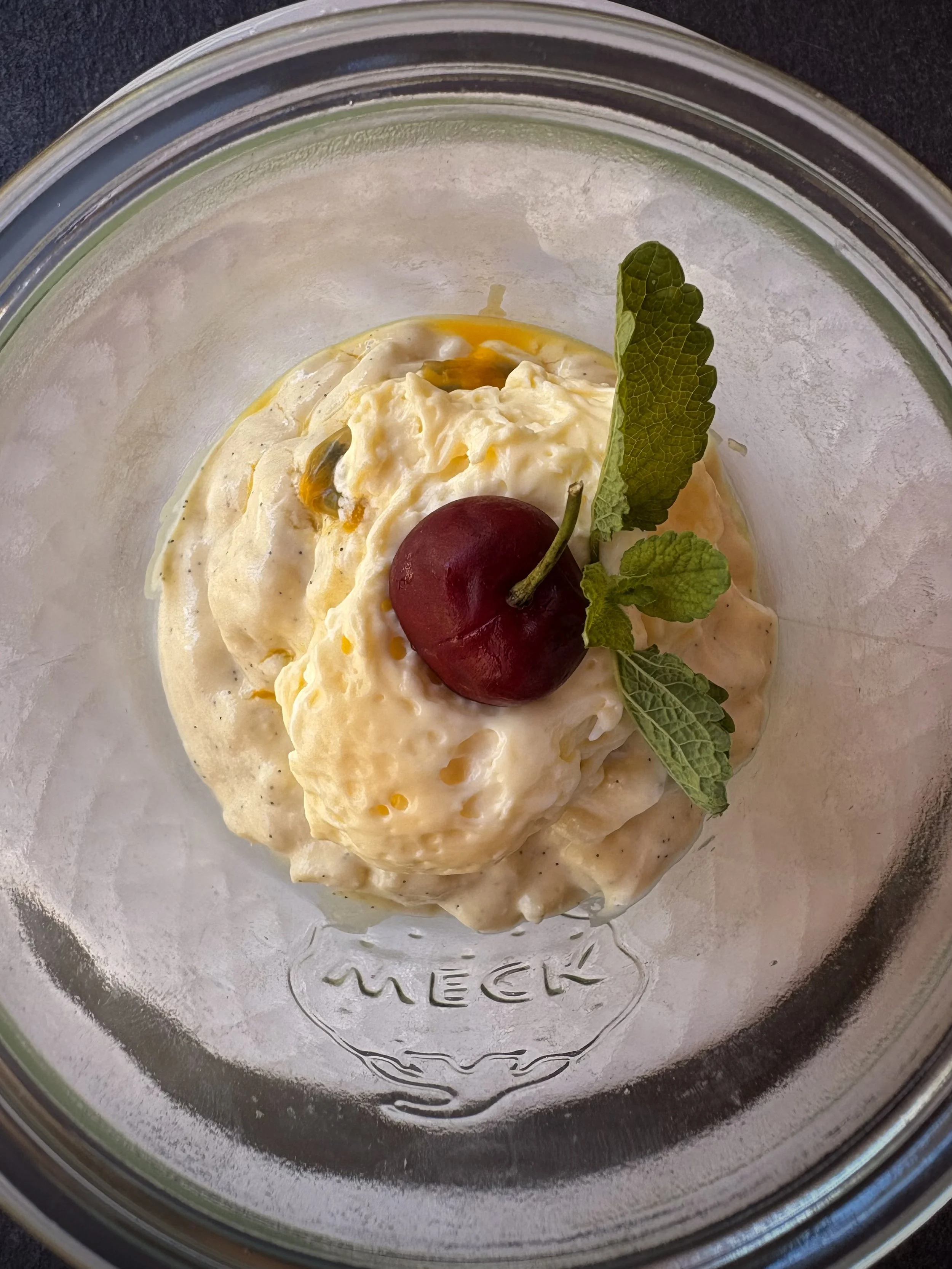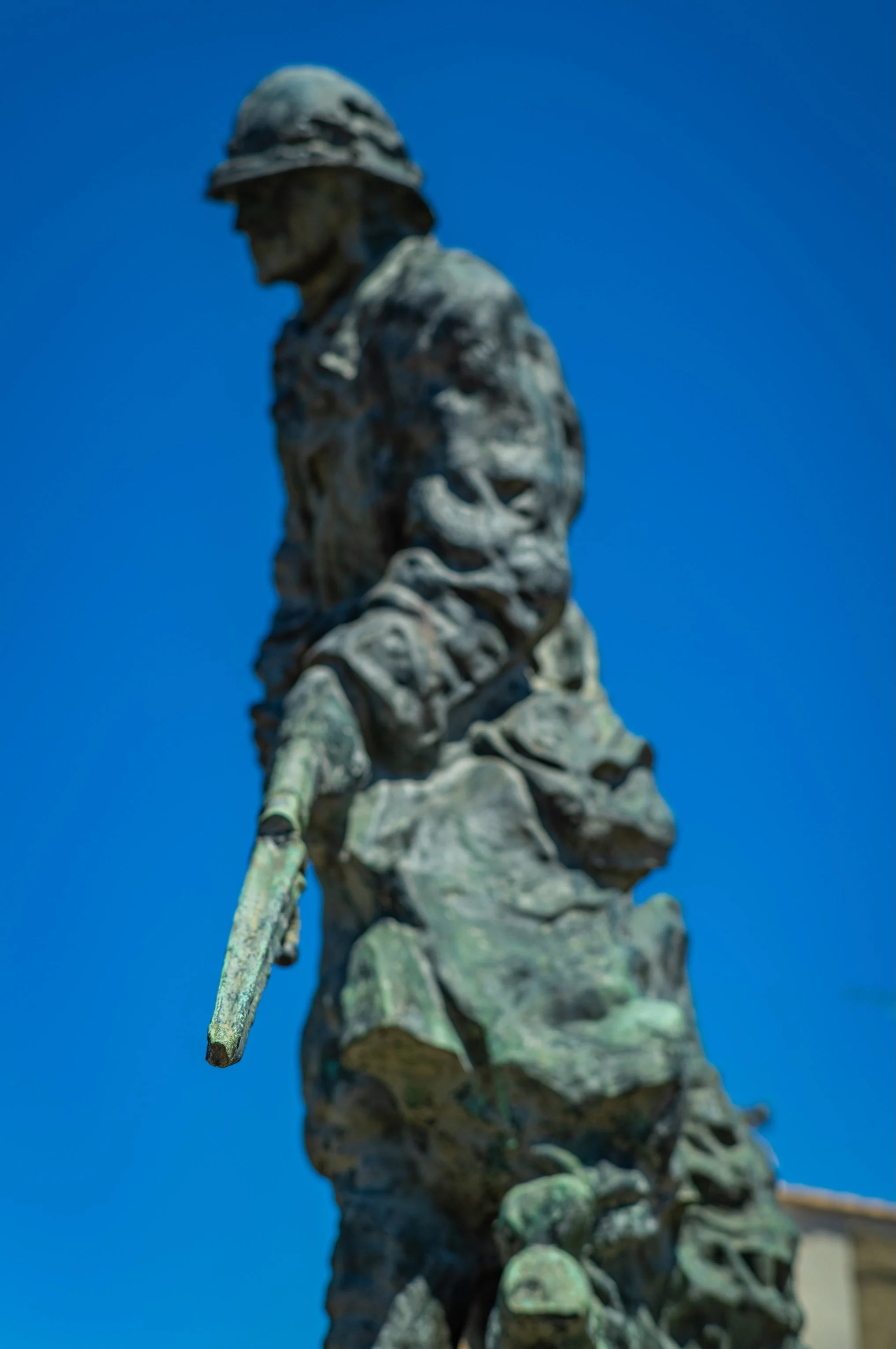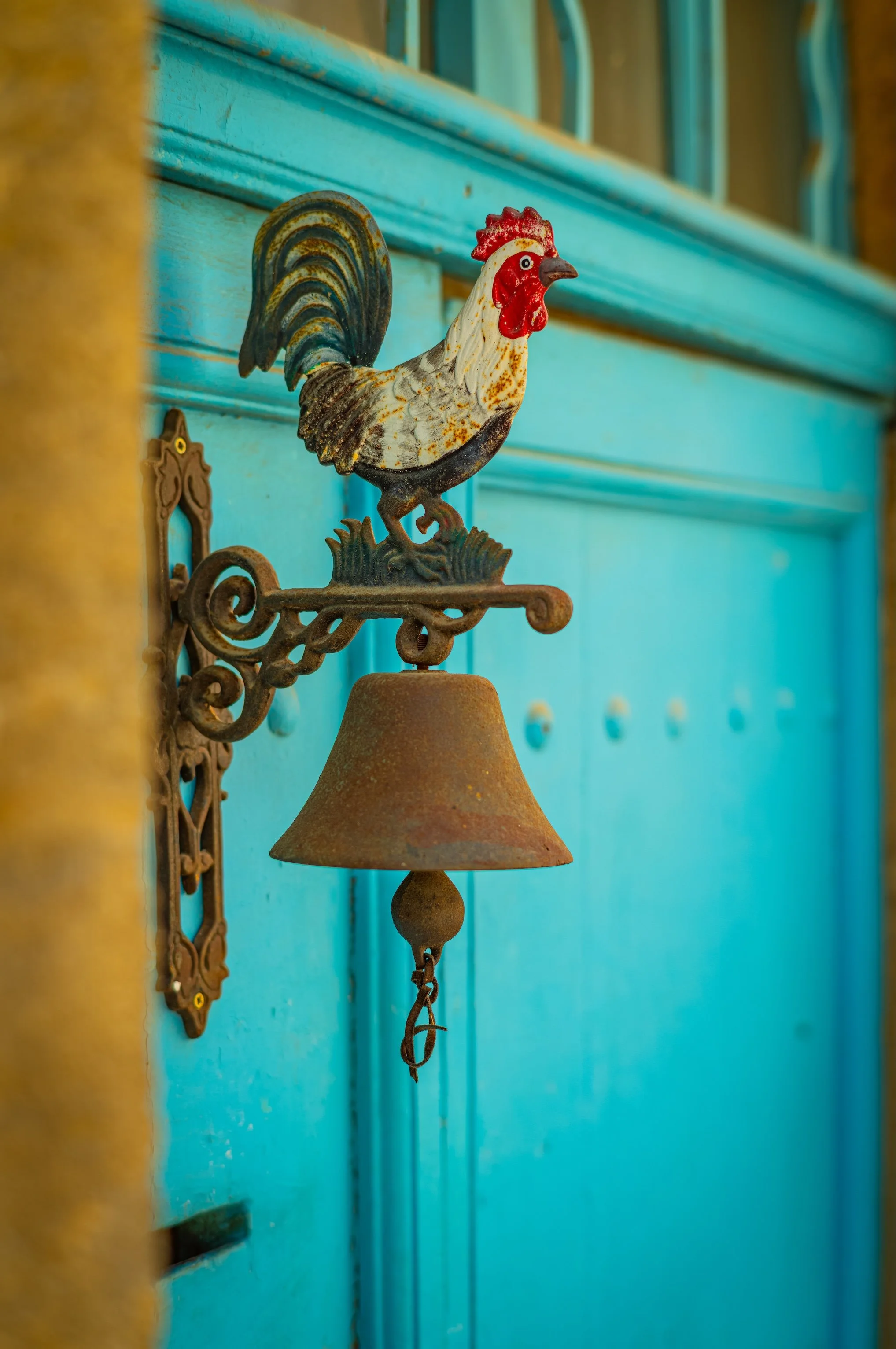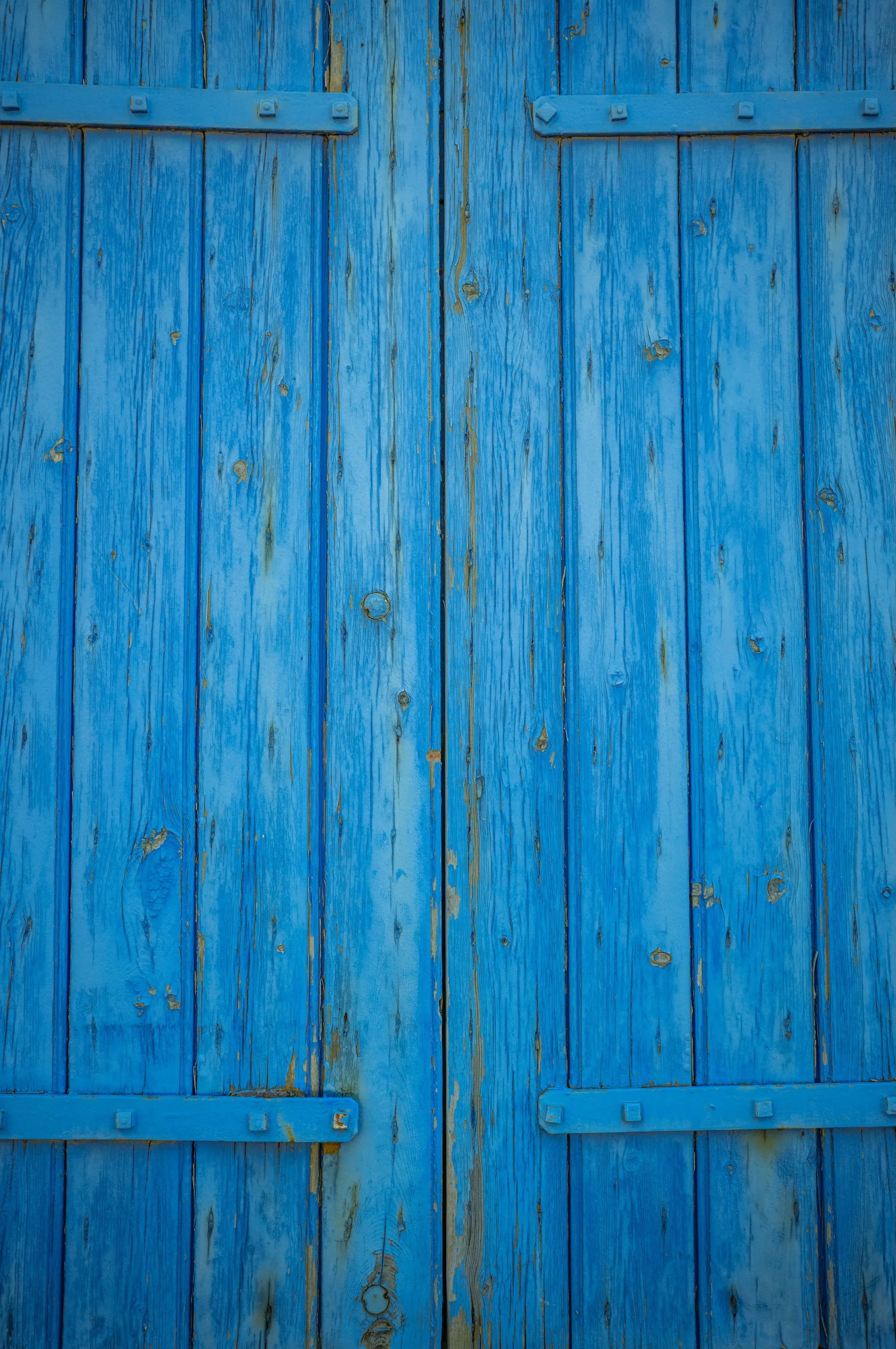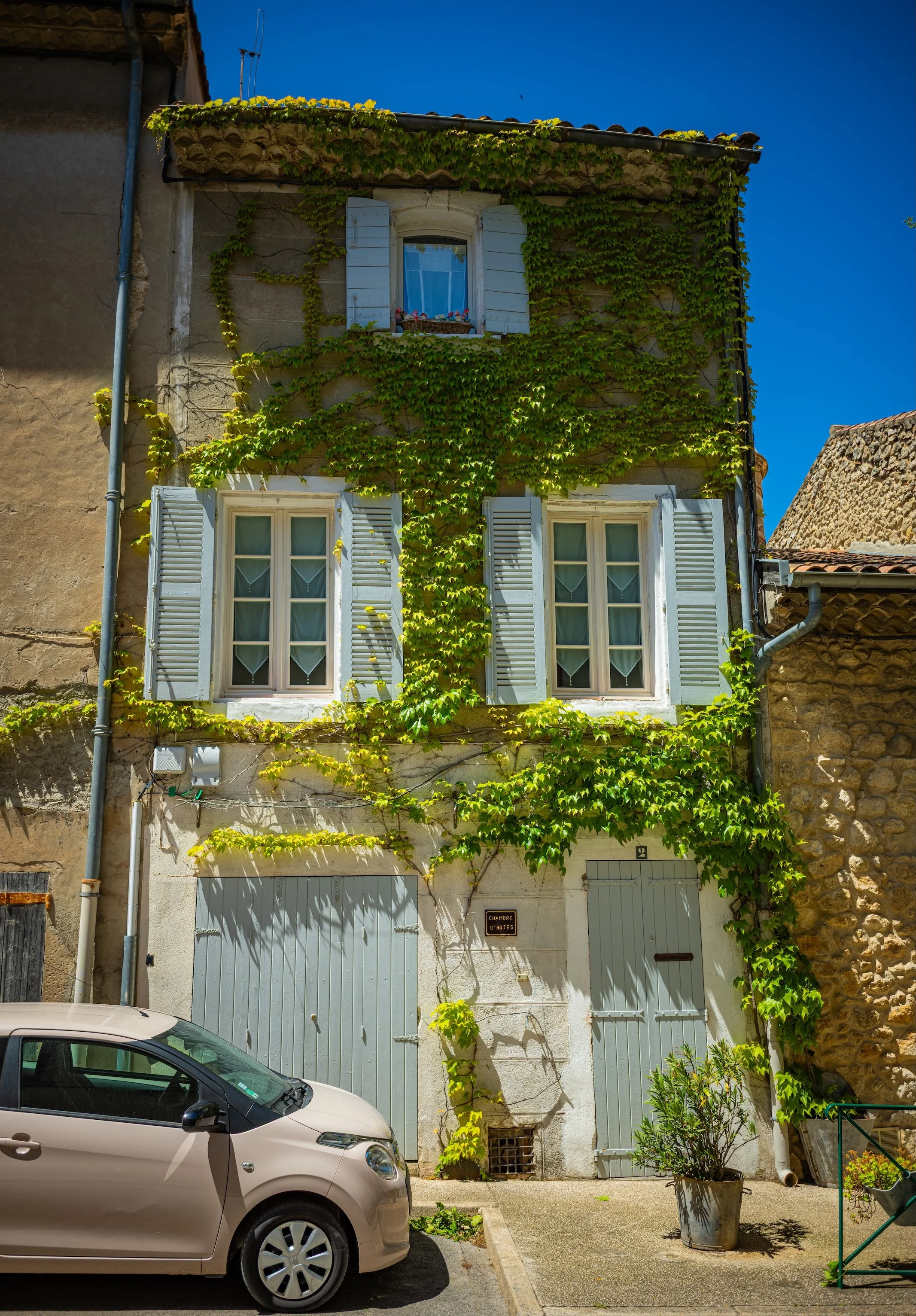Of Poached Cod and Provençal Calm: A Spring Day in La Roque-d’Anthéron and the Abbey of Silvacane
If you’ve ever wondered where Provence keeps its best secrets, they are, rather predictably, tucked away behind a stand of plane trees, in a quiet valley, accessible only if you’re mildly lost or following the advice of someone who knows the difference between Gordes and greatness.
Today, I found myself in one such secret: La Roque-d’Anthéron, a drowsy village in the Bouches-du-Rhône that doesn’t bother competing with its more famous Luberon neighbours. It knows what it is—a village of silences, sun-drenched shutters, and mornings spent coaxing coffee out of stainless-steel espresso pots older than most French presidents.
Just a short saunter from here, like a monastic afterthought, lies the Abbey of Silvacane—one of Provence’s grand Cistercian abbeys, alongside Sénanque and Le Thoronet. But while the latter two jostles for camera clicks and coach tours, Silvacane simply stands. And it does so with gravitas. On today’s visit, I had the pleasure of using both my M11 Black Paint and the new M11-P Safari. Paired to those cameras was a 28mm Summaron and a 50mm Classic Summilux.
Built in the 12th century from pale local limestone, the abbey is an ode to simplicity. No gilded altars. No overwrought cherubs. Just symmetry, cool shadows, and a nave that humbles even the loudest among us. Walking its cloisters is like stepping into a meditation. You leave speaking softer, breathing deeper, and thinking—momentarily—that perhaps joining the Cistercians wouldn’t be so bad after all.
But of course, being alive in Provence involves a more secular devotion: lunch.
Back in La Roque-d’Anthéron, I slipped into a local bistro for the menu du midi, which is as close to religion as one needs on a weekday. It began with a poached egg in a bright green pea velouté, a dish that could bring the dead back for brunch. The egg, rich and runny, met the sweetness of the peas with a soft, vegetal whisper, while a dusting of chèvre added just enough tang to make your eyes roll back in your head.
iPhone 16.
The main course was poached cabillaud, served with green asparagus and hollandaise sauce—a plate so classically French that one half-expected Charles de Gaulle to emerge from the kitchen to assist you in removing the perfectly crispy cod skin tableside. The asparagus, tender yet proud, had been bathed in sunshine and affection. The hollandaise was lush, glossy, and just this side of scandalous—coating each bite in a buttery epiphany.
iPhone 16.
Then came dessert. Now, I’ve had rice pudding before—most of us have, in various school cafeterias and dubious family kitchens. But this was not that. This was riz au lait reborn: a creamy, slow-stirred rice pudding set over a sultry caramel base, with ribbons of passion fruit folded through as if stirred in by the hand of someone who understands joy at the molecular level. It was bright, luxurious, and exactly the kind of pudding that makes you sigh halfway through eating it—not because you’re full, but because you know it will end.
iPhone 16.
And then came the moment that defines Provençal afternoons: the hush. Lunch ends, chairs scrape back, and the village exhales. The staff of the café slipped away like stagehands in a one-act play. Doors closed. Lights dimmed. And I found myself walking—slowly, aimlessly—through the shaded streets of La Roque-d’Anthéron.
This post-lunch village walk is my favourite chapter in the French day. Children’s laughter bounces from unseen school courtyards. Elderly men perch beneath fig trees discussing football, or possibly the shortcomings of nearby towns. Cats—legions of them—regard you like minor royalty. There is no hurry here. There is only now.
I wandered down side streets that led nowhere in particular and found the most remarkable things: a crumbling fountain with a lion’s head spout, a ceramic-tiled street sign in perfect 1930s Art Deco font, a café closed until 18h00 with a sign that read simply, « repos »—rest. As if one needed an excuse.
There’s something about these moments that reminds you why you travel: not to see more, but to see differently. To be still. To feel the breeze off the Durance and the warmth of old stone against your palm. To hear your footsteps echo and know they’re part of a sound that’s been heard here, unchanged, for centuries.
La Roque-d’Anthéron and Silvacane Abbey are not on most itineraries, and that is precisely the point. These are places to wander rather than tick off, to eat slowly, to listen, to nap under the weight of lunch and spring air.
If you’re looking for the France that’s not trying too hard to impress you—the France that simply is—this is where it’s been hiding. And after a meal like that, who wouldn’t want to stay hidden for a while?
Practical Info for Your Visit
Village: La Roque-d’Anthéron, Bouches-du-Rhône, Provence-Alpes-Côte d’Azur
Nearby Highlight: Abbey of Silvacane – Cistercian monastery, open to visitors year-round
When to Visit: Spring or early autumn for fewer crowds and perfect café weather
Best lunch spots: Keep your eyes peeled for local “menu du midi” boards—handwritten menus are often a good omen
Don’t Miss: The post-lunch quiet. Truly, it’s a cultural artifact in itself.
I hope you have enjoyed today’s visit and a stop for lunch. Please leave your thoughts in the comments below if you have a spare moment. All of today’s images were taken with the Leica M11-P Safari and the M11 Black Paint. Mounted on those cameras were the 50mm F1.4 Classic Summilux and the 28mm F5.6 Summaron.
Live well!
M.









